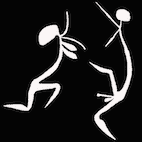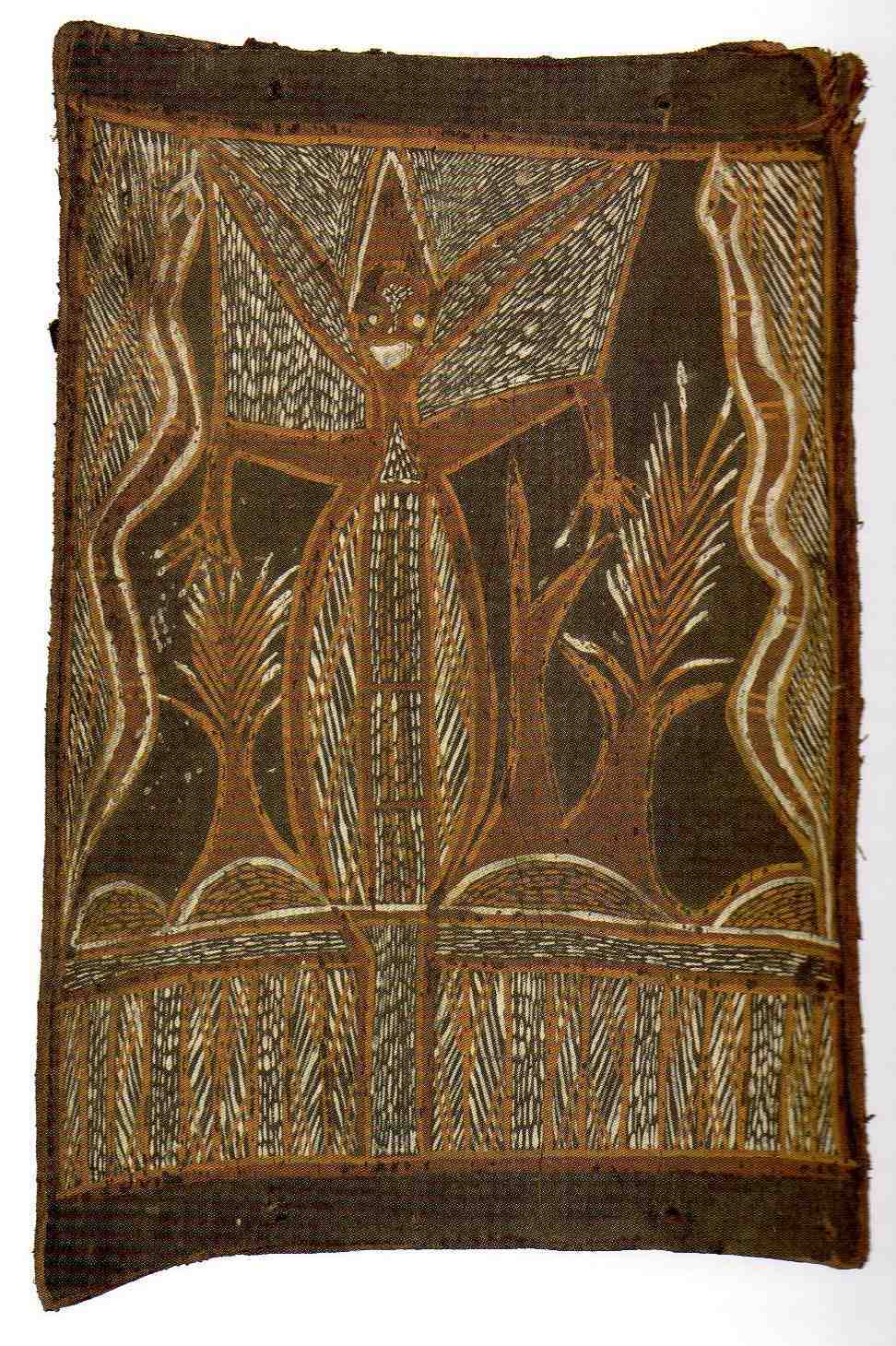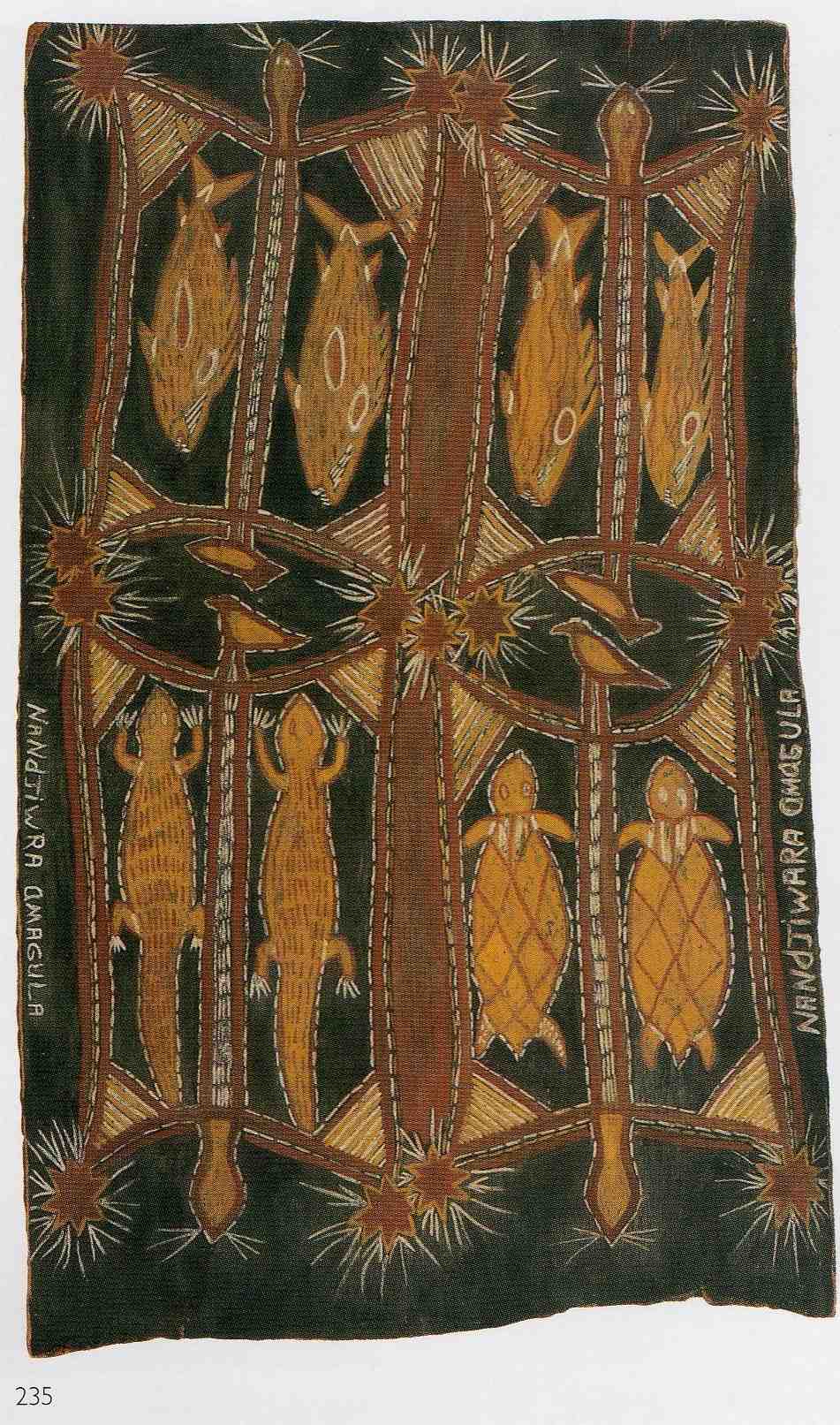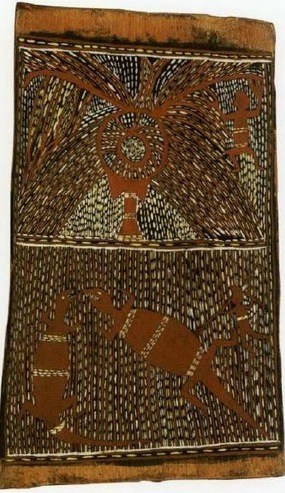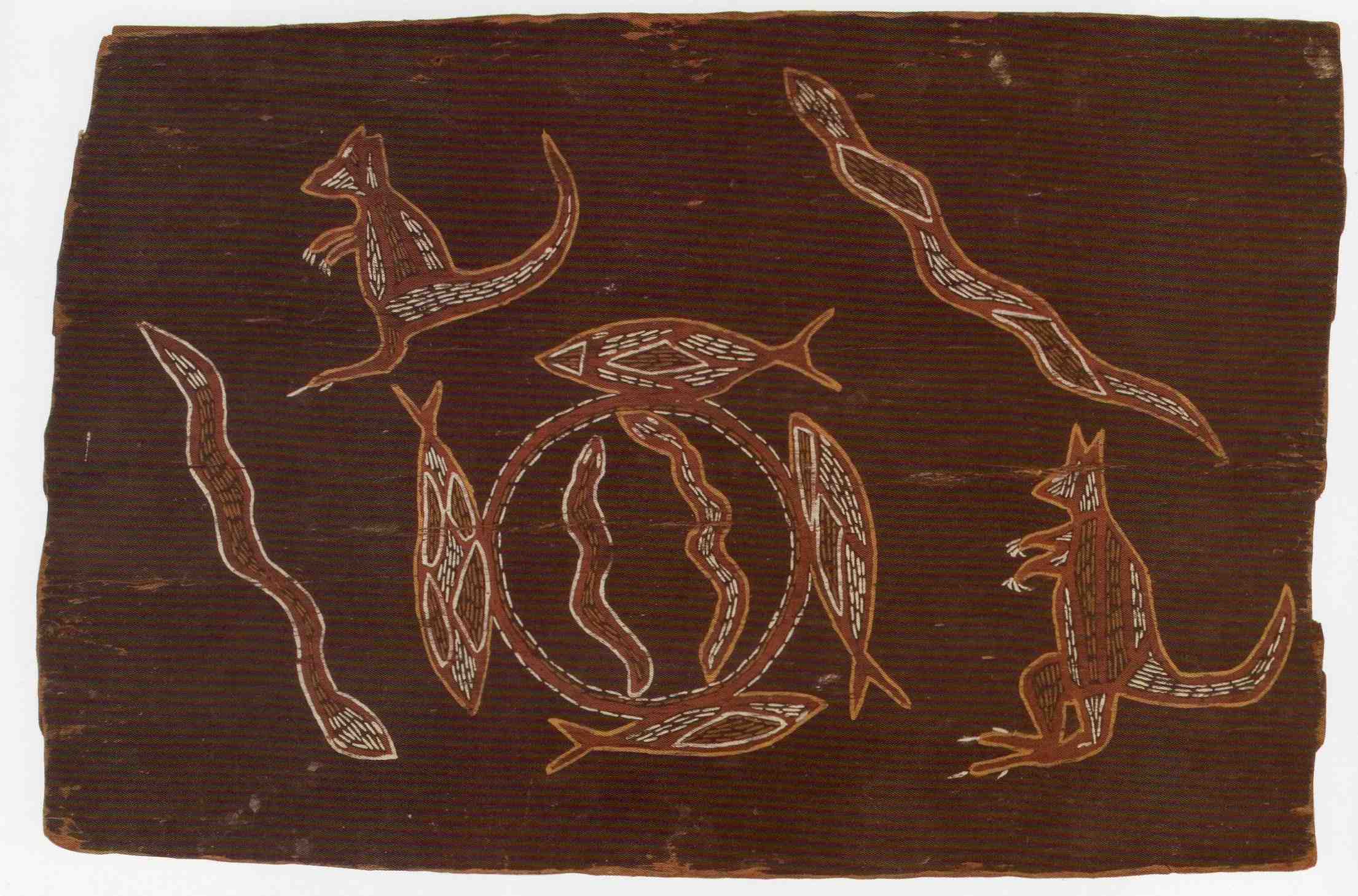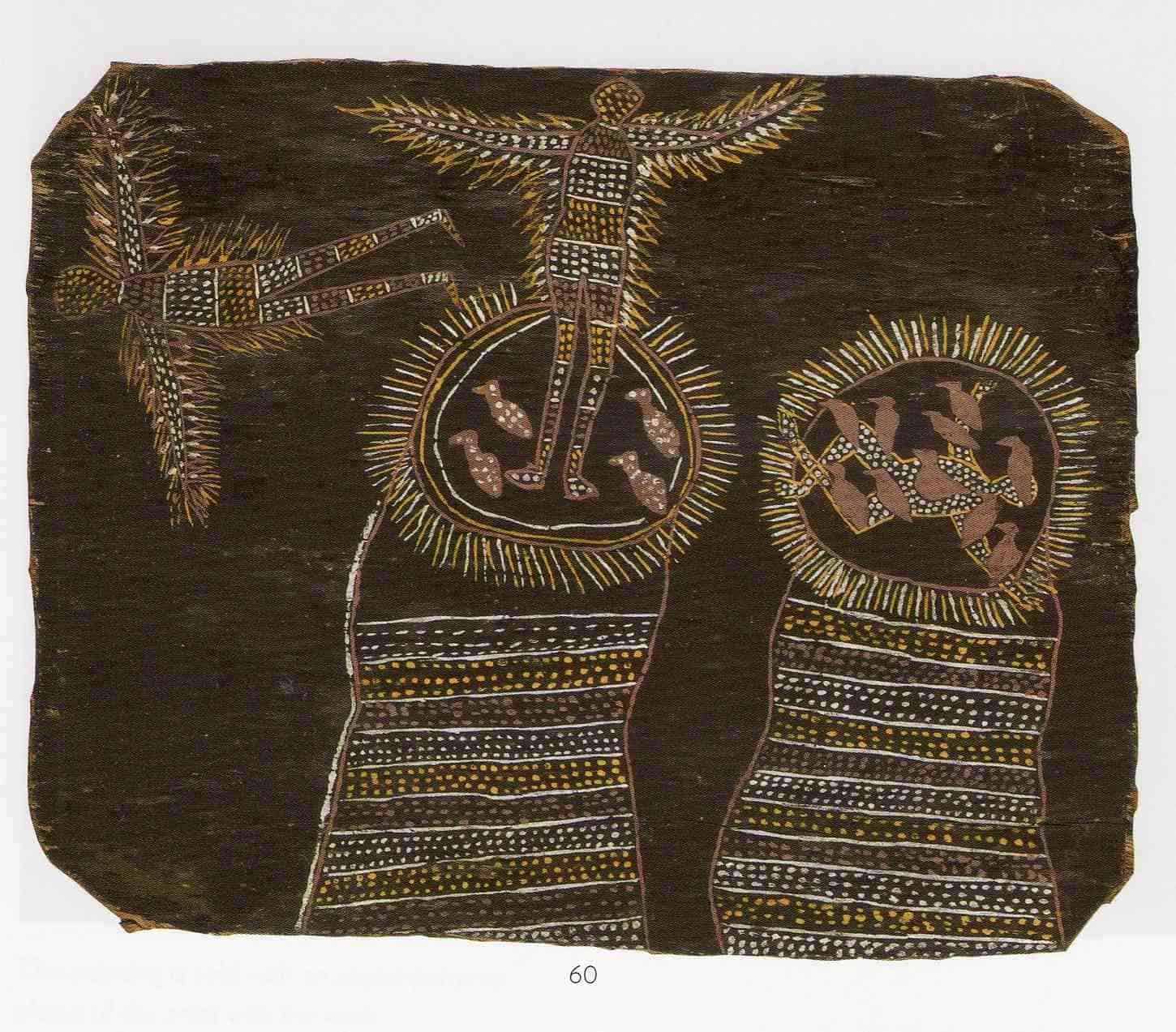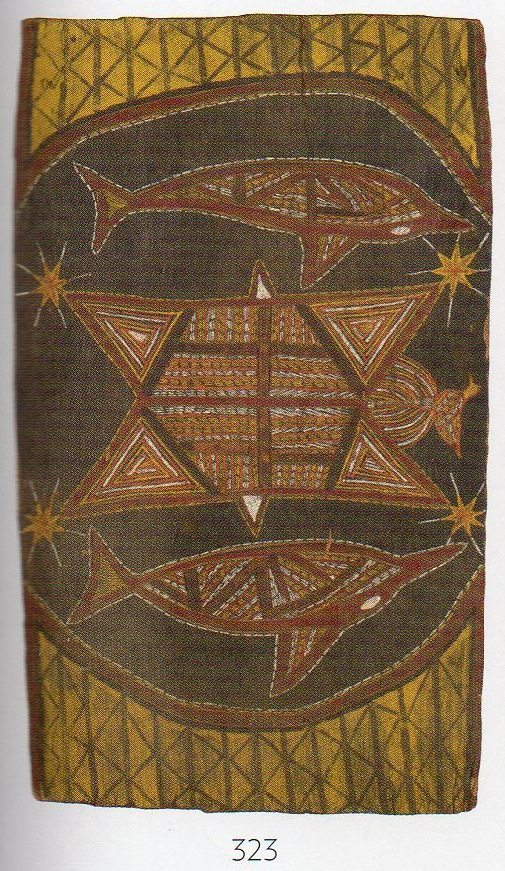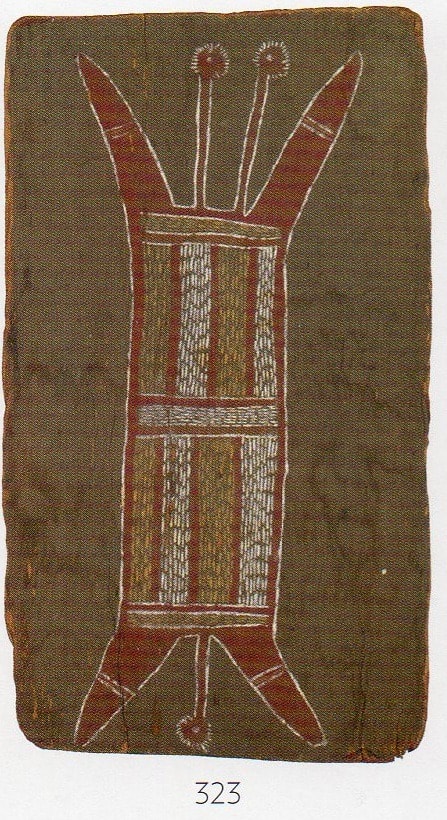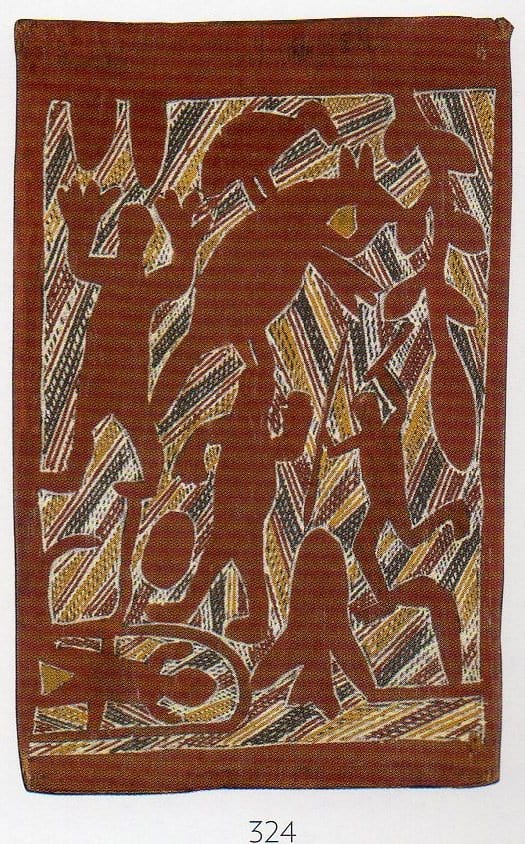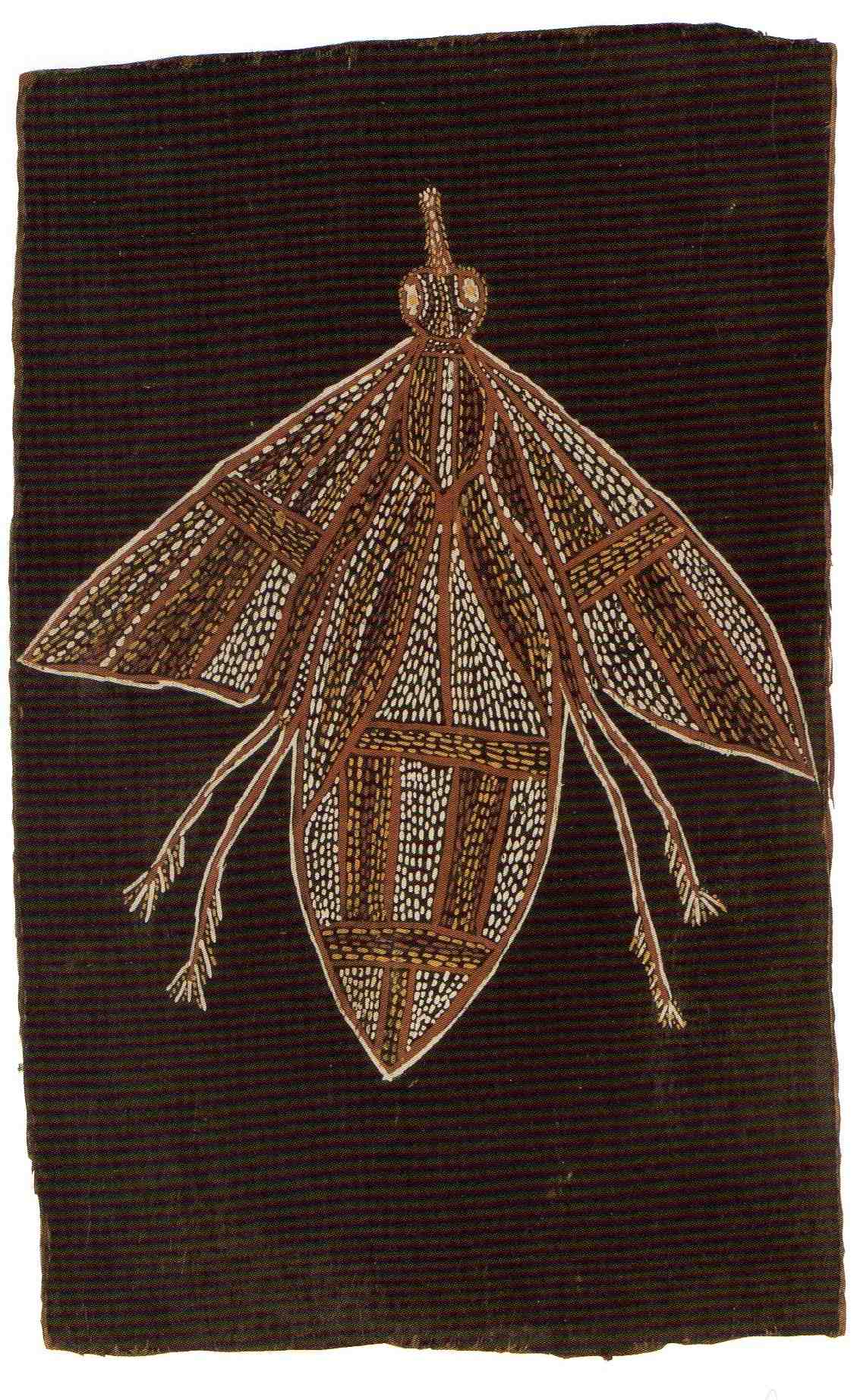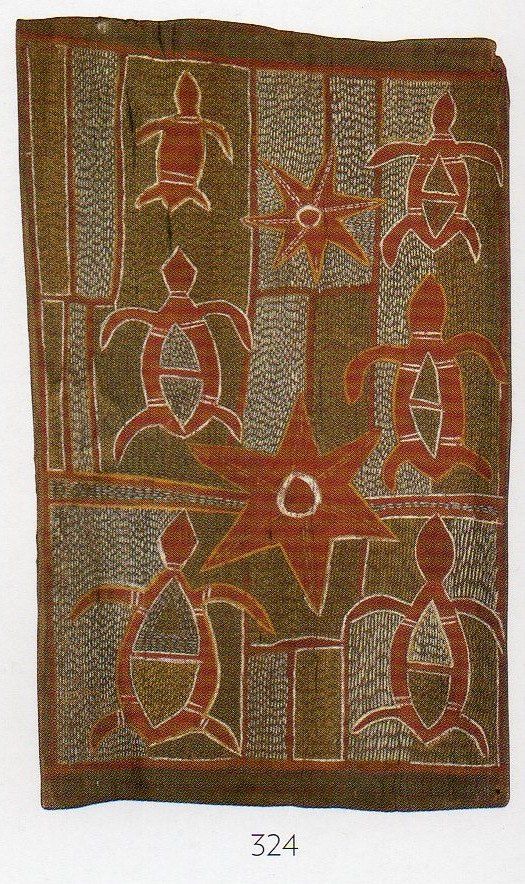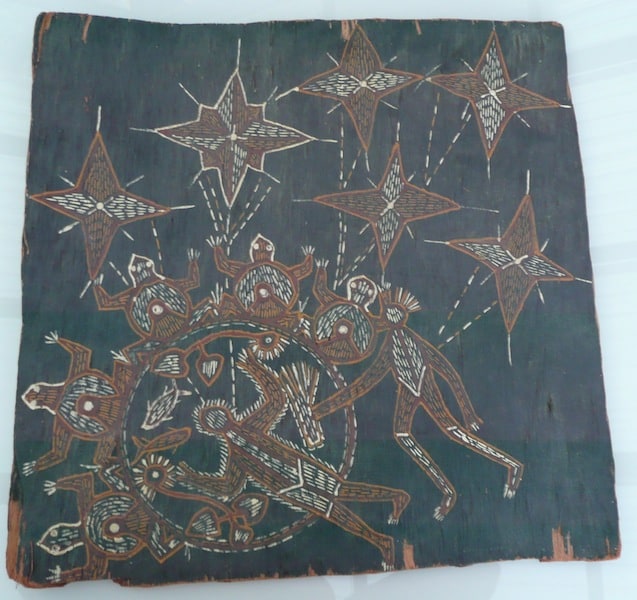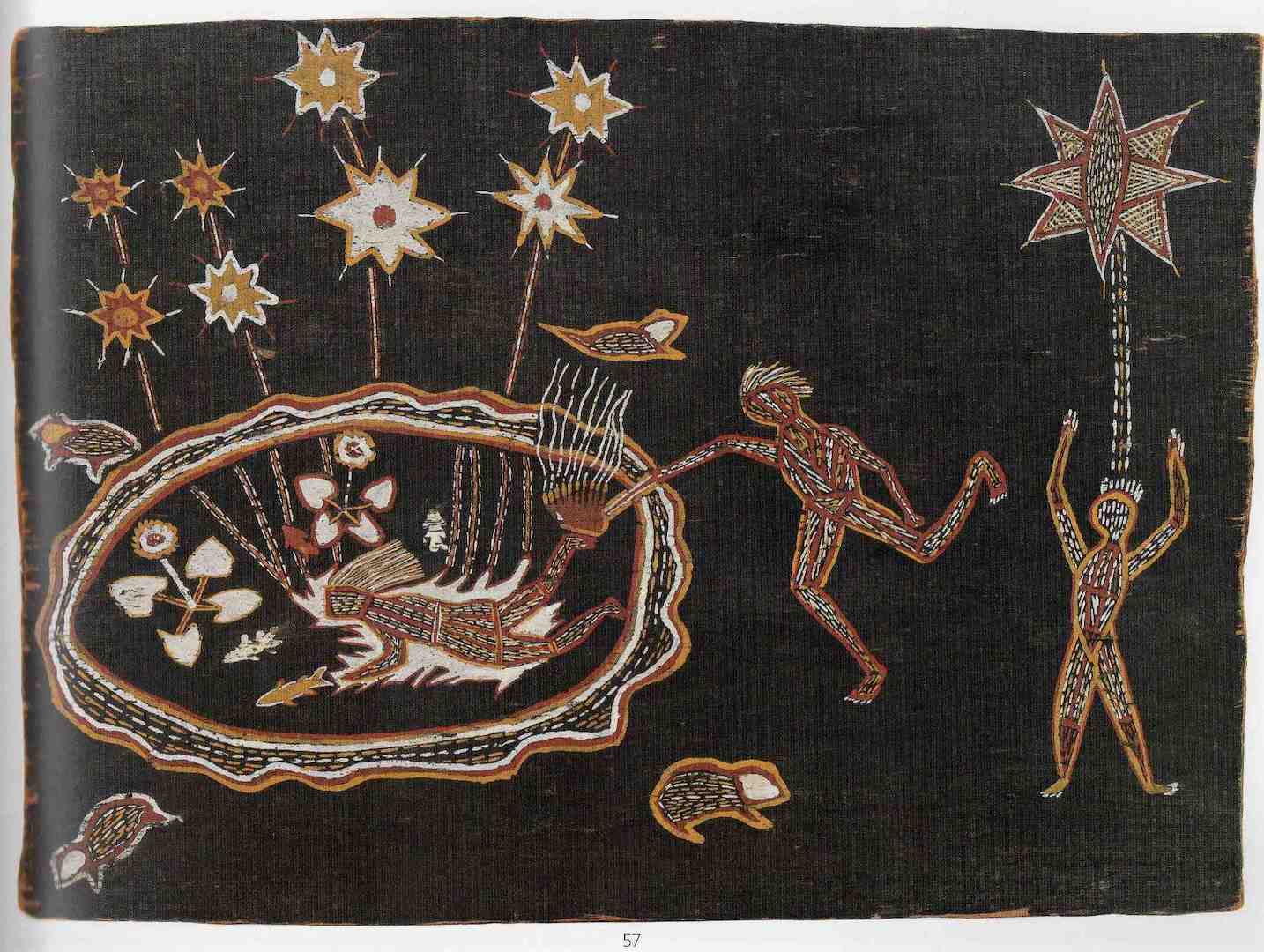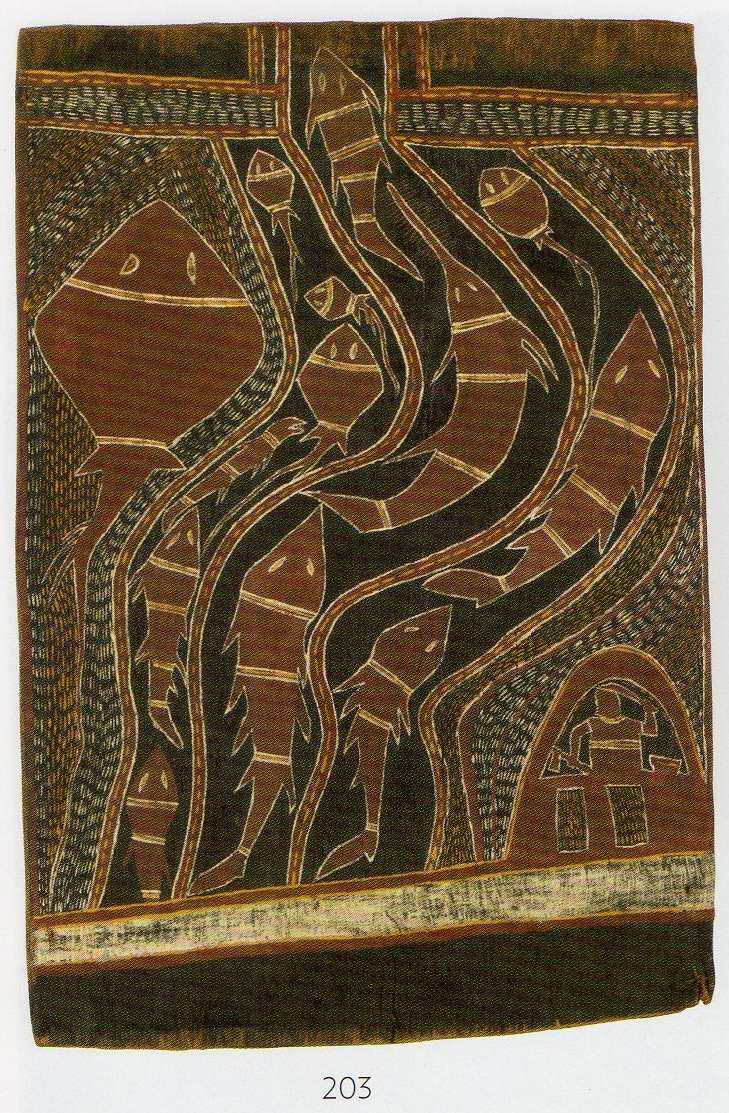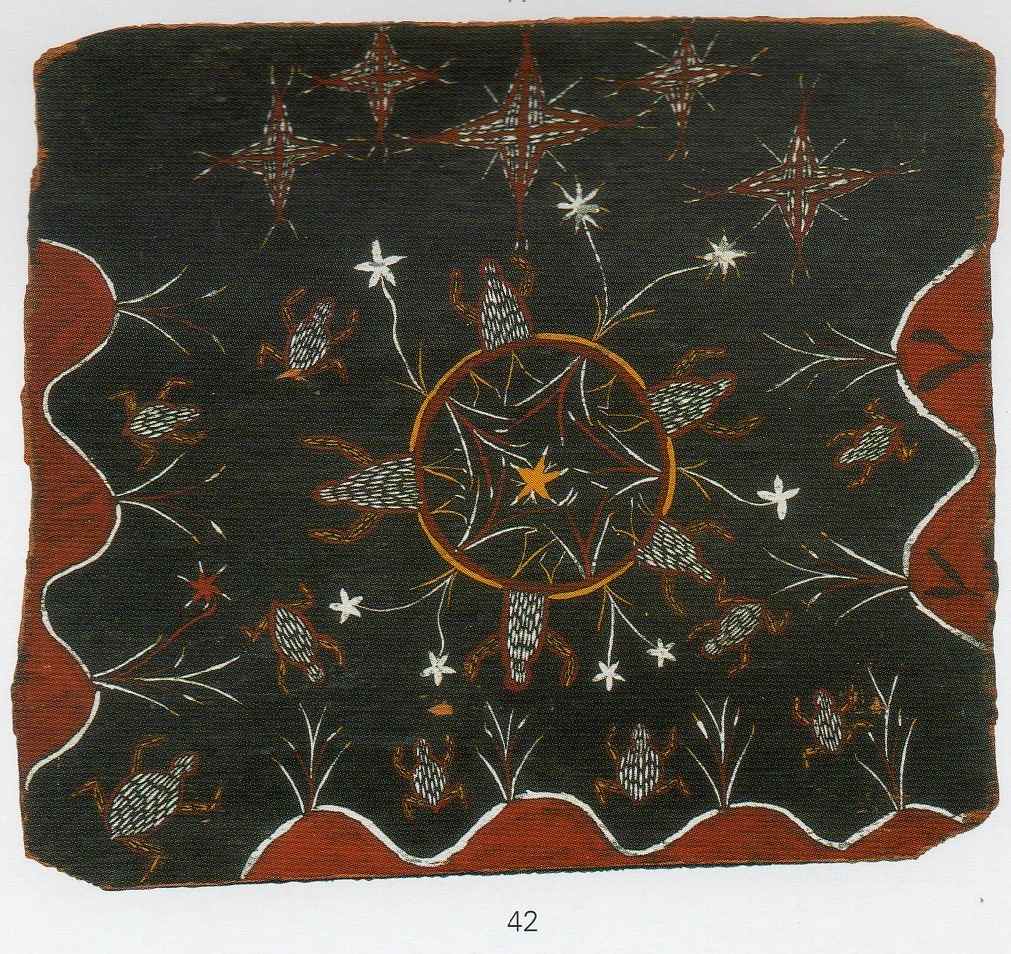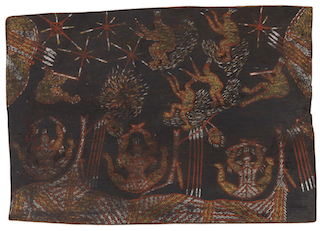Thomas Nanjiwara Groote Island Bark Painting
The aim of this article is to assist readers in identifying if their aboriginal bark painting is by Nanjiwara. It compares examples of his work. Nanjiwara painted bark painting in the Groote Eylandt style. He used traditional ochre and is a recognized aboriginal bark painting expert.
If you have an Amagula Nanjiwara bark painting to sell please contact me. If you want to know what your Thomas Nanjiwara painting is worth to me please feel free to send me a Jpeg. I would love to see it.
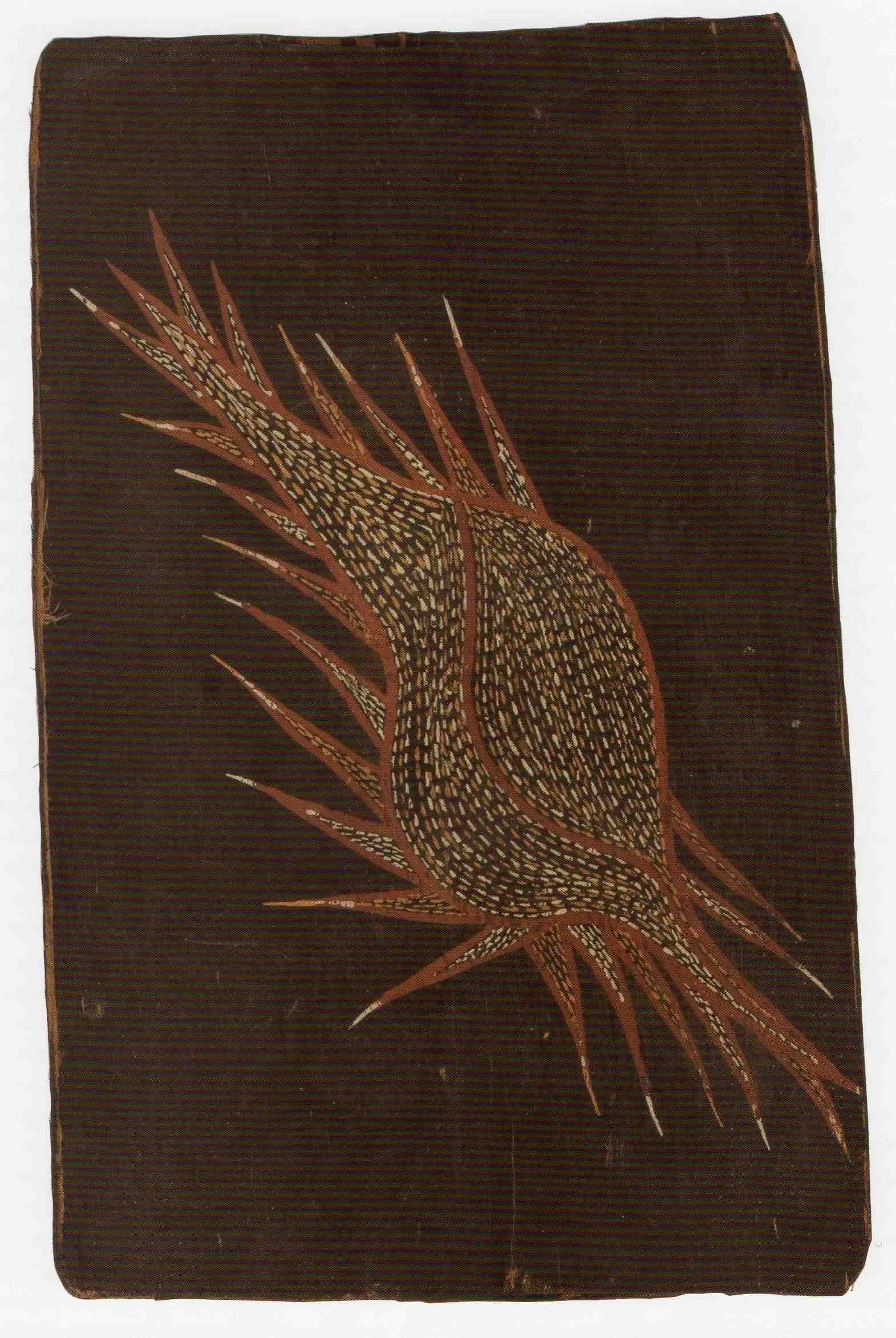
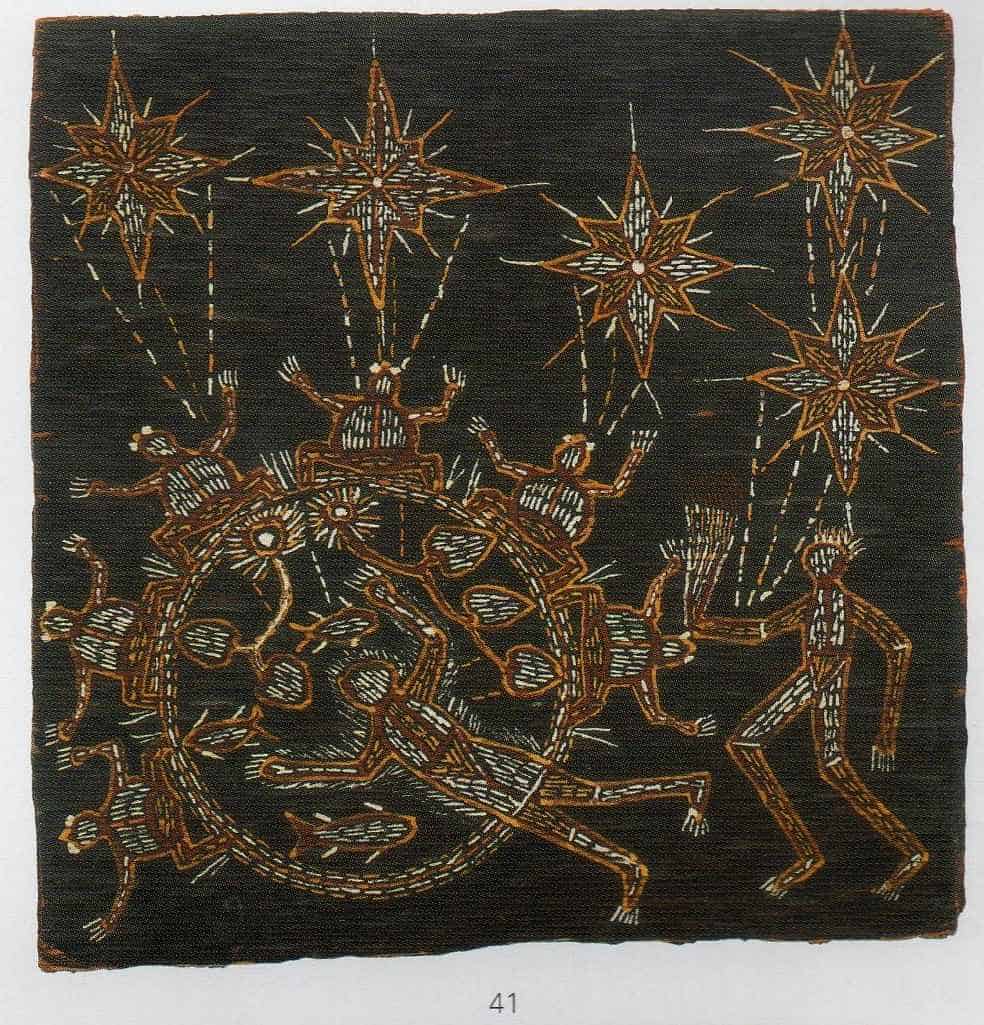
Nanjiwara did several paintings that depict ceremonies and relate to creation stories. These are the most desirable to collectors. The majority of Thomas Nandjiwarra Amagula aboriginal bark painting has a dark brown or black background.
Nanjiwara’s earliest works often depict single totemic animals. These include shells insects and sawtooth sharks. many of his larger works depict aspects of the Groote Island creation stories.
Where he draws figures he tends not to depict eyes or facial features. the faces and bodies of his figures instead covered in stippling. Many of his more complex barks contain the morning star motif.
He was an Artist, respected Aboriginal leader and Justice of the Peace. Awarded an MBE in 1970 for his community work. In 1969 was Chairman of the Angurugu Council on Groote Eylandt. He negotiated with mining companies to secure areas to be protected. The second Aboriginal magistrate appointed for the Northern Territory in 1974. In 1981, Nanjiwara was chairman of the Aboriginal Cultural Foundation. In 1985 he was Chairman of the Groote Eylandt Aboriginal Task Force. He also worked on Aboriginal Benefits Trust Fund and BHP Royalties Trust Fund. Played the role of Charlie in Peter Weir’s 1997 film, The Last Wave. If anyone knows more information about the biography of Thomas Nanjiwara please contact me as I would like to add it to this article.
Care for Aboriginal Bark Painting by ensuring it always stays dry and does not move as ochre can flake off. A bark painting is best stored in a dust-free place and away from insects.
Nanjiwara is sometimes spelled Nanjiwarra or called Amagula after his clan name
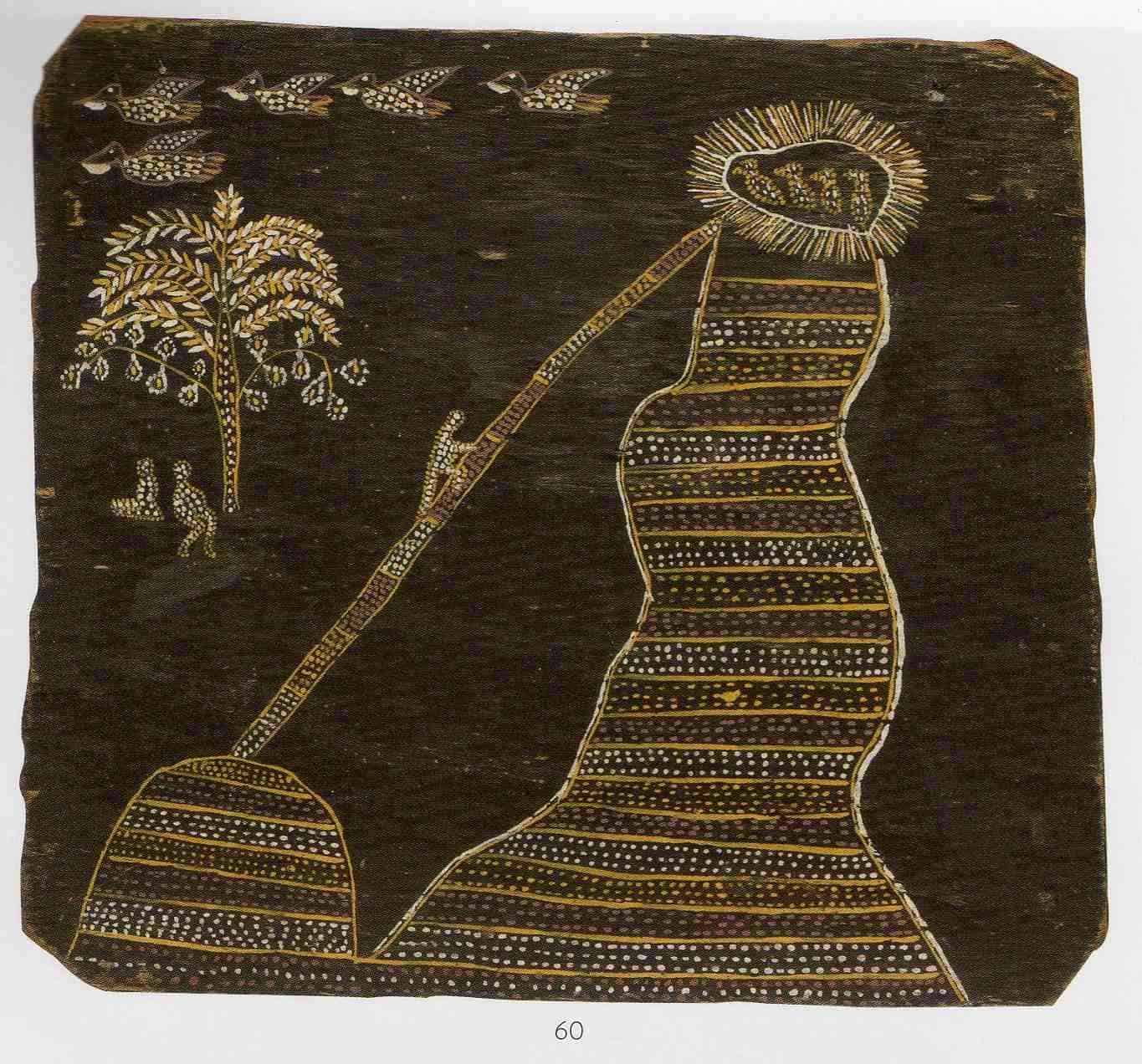
Thomas Nanjiwara Images
The following is not a complete list of works but gives a very good idea of this artists style and variety.
If this post has been informative please take the time and make the effort to share it on social media. By clicking any of the share buttons below you create a link from your social site to this article. Links are what google uses to calculate what information on the web is useful. By sharing this article you are letting google know you found my article / images of some value. Thanks!
